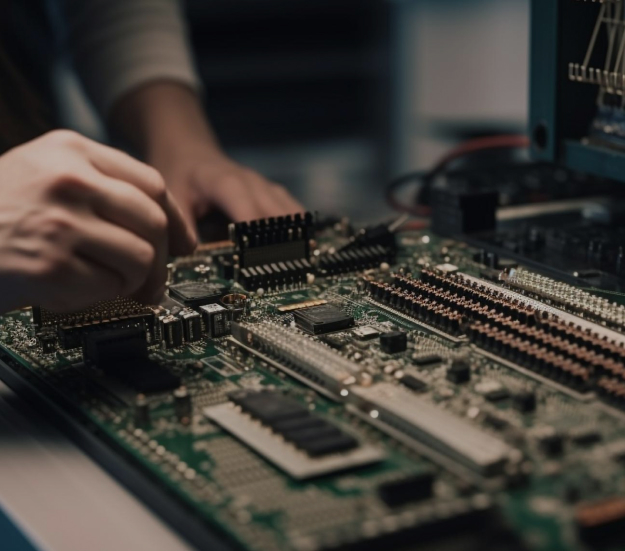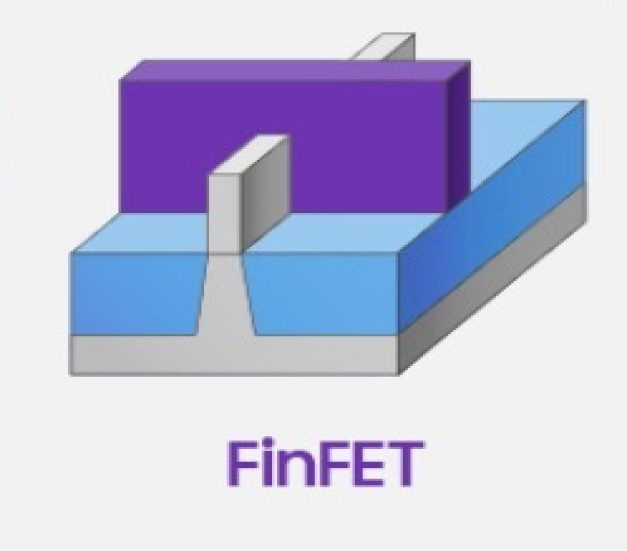From Classrooms to Cleanrooms: Academia's Role in Shaping India’s Semiconductor Industry
Written by - Shivaprasad BK, from Abhiyantha July 31, 2024 5 Minutes
India is poised to emerge as a leading player in the global semiconductor sector, thanks to a combination of strategic governmental initiatives, industry partnerships, and crucial academic contributions. The Indian semiconductor market, expected to grow from $23 billion in 2023 to $63 billion by 2026—a substantial compound annual growth rate (CAGR) of 22.5% (Statista)—underscores the increasing importance of educational institutions in driving talent and innovation.
Curriculum Development:Bridging Education and Industry
Engineering schools across India are evolving to meet the semiconductor industry's needs. The National Association of Software and Service Companies (NASSCOM) reports that over 60% of engineering institutions in India have updated their curricula to include specialised semiconductor design, fabrication, and testing courses. These changes incorporate material science, electronics, and VLSI engineering to offer students both theoretical and practical skills crucial for the semiconductor sector.
Institutions like the Indian Institutes of Technology (IITs) and National Institutes of Technology (NITs) are leading the way with advanced semiconductor programs and cutting-edge labs. For instance, IIT Bombay has established a state-of-the-art VLSI (Very Large Scale Integration) design laboratory, integrating real-world applications and industry-relevant technologies (KPMG) (Techcircle).
Research and Development: Driving Innovation
Academic institutions are central to semiconductor research and development (R&D). As of 2024, India boasts over 30 semiconductor R&D centres within various universities, contributing significantly to the global semiconductor knowledge base. Indian researchers have published over 1,200 papers and secured more than 150 patents in semiconductor technologies over the past year alone (SEMI) (Techcircle).
Collaborative research involving students, faculty, and industry experts plays a key role in advancing semiconductor technology. Partnerships between academia and global semiconductor companies have led to groundbreaking innovations and accelerated technological progress.
Industry Collaboration: Closing the Gap
The alignment between academia and industry is vital for the semiconductor sector's advancement. More than 70% of Indian engineering colleges now partner with leading semiconductor firms, providing internships, cooperative education programs, and hands-on training. These collaborations offer students valuable industry exposure and practical experience, bridging the gap between academic theory and industry practice (Invest India).
Additionally, guest lectures and workshops by semiconductor professionals keep students informed about the latest trends and technologies, ensuring they are both technically adept and aware of the industry's evolving landscape (Invest India).
Skill Enhancement Programs: Workforce Preparation
Addressing the semiconductor industry's skill gap is a major focus for many engineering institutions. As of 2024, over 150 specialised certification programs in VLSI design, embedded systems, and related fields are available across India. These programs are designed to provide students with the specific skills needed in the semiconductor industry, enhancing their job readiness (Techcircle) (Invest India).
Technical competitions and hackathons hosted by academic institutions further challenge students to apply their skills in real-world scenarios, fostering hands-on learning and problem-solving abilities crucial for their career development.
Faculty Development: Ensuring Educational Excellence
Ongoing faculty development is essential for maintaining high standards in semiconductor education. Engineering colleges are increasingly supporting faculty members in taking sabbaticals and pursuing professional development within the semiconductor industry. This real-world experience allows educators to bring valuable insights back to their classrooms, enriching the student learning experience.
Participation in international conferences and seminars helps faculty members stay updated on global trends and innovations in semiconductor technology, ensuring they can effectively guide and inspire their students (Techcircle).
Incubation and startups: Encouraging Innovation
Academic institutions are promoting entrepreneurship through incubator centres that support student-led startups. With over 50 such centres operating across India, these facilities offer mentoring, funding, and resources necessary to transform innovative ideas into successful ventures. This support includes access to venture capital, angel investors, and industry mentors, creating a dynamic ecosystem for semiconductor-related startups (Techcircle).
Conclusion
India’s potential as a global semiconductor leader is significantly shaped by its academic sector. Through progressive curriculum development, pioneering R&D, strategic industry partnerships, targeted skill enhancement programs, and comprehensive faculty development, engineering colleges and universities are playing a crucial role in advancing India's semiconductor industry. By nurturing a skilled and innovative workforce, academia is not just supporting but actively driving India’s aspirations to become a major player in the global semiconductor market.
For further details, refer to:
- ● KPMG on India's Semiconductor Ambitions
- ● Invest India on the Semiconductor Industry
- ● SEMI on SEMICON India 2024
Share This Blogs
Featured Blogs

Top 10+ Most Asked VLSI Interview Questions with Answers by Industry Expert

The Ultimate Guide to Finding the Best VLSI Course in Bangalore
A Comprehensive Guide to Securing Your Dream Job in the Semiconductor Industry

Advancements in Semiconductor Manufacturing: Pioneering the Future of Electronics

Embracing the Future: Advanced Node Technologies in VLSI Design

The Evolution of Integrated Circuits: A Journey of Innovation

How to Learn VLSI from Scratch

Will AI disrupt EDA? Let’s examine the future of semiconductor design with AI.

Breaking Boundaries with Chiplets: The Future of Advanced Packaging.

Understanding FinFET Technology: A Comprehensive Overview.

Moore’s Law vs. More than Moore: What’s Next for Semiconductor Scaling?

Common Challenges in Designing Low-Power VLSI Circuits